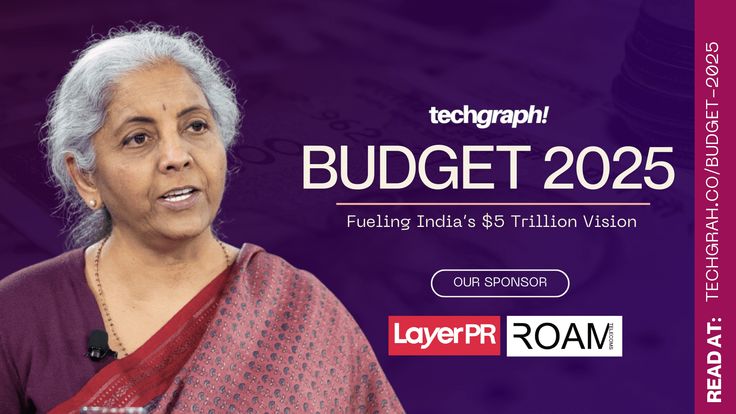From income slabs to corporate rates, we break down the key changes and what they mean for you. Stay tuned for real-time updates and expert insights!

As the sun rises on a new fiscal year, India eagerly awaits the unveiling of the Union Budget 2025—a blueprint that promises to shape the nation’s economic trajectory. With the Finance Minister’s speech echoing through the halls of Parliament, the budget is more than just numbers on paper; it’s a vision for the future, a roadmap to prosperity, and a reflection of the hopes and aspirations of 1.4 billion Indians.
This year’s budget comes at a pivotal moment. The world is watching as India cements its position as a global economic powerhouse, and the Union Budget 2025 is expected to be a bold statement of intent. From tax reforms to infrastructure development, from digital innovation to green energy initiatives, the budget is poised to touch every aspect of our lives.
1. Tax Reforms: Who Pays How Much?
The buzz around tax slabs is louder than ever. Will the middle class finally get some relief? Will the super-rich contribute more to nation-building? The Union Budget 2025 is expected to bring significant changes to the income tax structure, aiming to simplify the system and make it more equitable.
- For the Middle Class: Rumors of increased tax exemption limits and revised slabs have sparked hope. Will the government ease the burden on salaried individuals and small businesses?
- For the Wealthy: With wealth inequality in focus, could there be a new surcharge or higher taxes for high-net-worth individuals?
- For Corporates: Will the budget incentivize businesses to invest in innovation and job creation
2. Infrastructure Push: Building the India of Tomorrow
Infrastructure has always been the backbone of economic growth, and Budget 2025 is expected to double down on this front. From highways to high-speed rail, from smart cities to rural connectivity, the government’s focus on infrastructure development is set to create millions of jobs and boost economic activity.
- Green Infrastructure: With climate change at the forefront, expect significant allocations for renewable energy projects, electric vehicle infrastructure, and sustainable urban planning.
- Digital Infrastructure: The budget is likely to prioritize expanding broadband connectivity and strengthening India’s digital ecosystem, paving the way for a tech-driven future.
3. Healthcare and Education: Investing in Human Capital
The pandemic taught us the importance of a robust healthcare system, and Budget 2025 is expected to reflect this lesson. Increased allocations for public health, vaccine research, and medical infrastructure are on the cards.
Education, too, is set to receive a boost, with a focus on digital learning, skill development, and making quality education accessible to all. After all, a nation’s true wealth lies in the potential of its people.
4. Agriculture and Rural Development: Empowering Bharat
India’s heart beats in its villages, and the Union Budget 2025 is expected to bring good news for farmers and rural communities. From higher MSPs to investments in agri-tech and irrigation, the budget aims to transform the agricultural sector and improve rural livelihoods.
5. Green Economy: A Sustainable Future
As the world grapples with climate change, India is stepping up its efforts to build a green economy. Budget 2025 is likely to introduce incentives for renewable energy, electric vehicles, and sustainable practices, positioning India as a global leader in the fight against climate change.
6. Startups and Innovation: Fueling the Dreamers
India’s startup ecosystem is thriving, and the government is keen to keep the momentum going. Expect tax breaks, easier access to funding, and policies that encourage innovation and entrepreneurship.

New Tax Regime (Default)
The new tax regime offers lower tax rates but removes most deductions and exemptions (e.g., HRA, LTA, Section 80C). Here are the updated slabs:
| Income Range (₹) | Tax Rate |
|---|---|
| Up to ₹4,00,000 | 0% |
| ₹4,00,001 – ₹8,00,000 | 5% |
| ₹8,00,001 – ₹12,00,000 | 10% |
| ₹12,00,001 – ₹16,00,000 | 15% |
| ₹16,00,001 – ₹20,00,000 | 20% |
| ₹20,00,001 – ₹24,00,000 | 25% |
| Above ₹24,00,000 | 30% |
Key Points:
- Rebate under Section 87A: If your total income is up to ₹7,00,000, you are eligible for a rebate, effectively making your tax liability zero.
- Surcharge:
- 10% for income above ₹50 lakh up to ₹1 crore.
- 15% for income above ₹1 crore up to ₹2 crore.
- 25% for income above ₹2 crore up to ₹5 crore.
- 37% for income above ₹5 crore.
- Health and Education Cess: 4% on the total tax payable.
What’s in It for the Middle Class?
The budget’s focus on the middle class is evident in its key provisions:
- Tax Reforms: Revised tax slabs and higher exemptions to increase disposable income.
- Affordable Housing: Enhanced benefits under the Pradhan Mantri Awas Yojana (PMAY) and tax incentives for first-time homebuyers.
- Healthcare and Education: Increased allocations for public healthcare and education to reduce out-of-pocket expenses.
- Job Creation: Policies to boost employment in sectors like manufacturing, IT, and infrastructure.
These measures are expected to not only ease the financial strain on households but also stimulate economic growth by increasing consumer spending and savings.
Sectoral Boost: Driving India’s Growth Story
Beyond individual benefits, the Union Budget 2025-26 also laid out a comprehensive plan to drive growth across key sectors:
- Infrastructure: Increased funding for roads, railways, and urban development projects to create jobs and boost connectivity.
- Agriculture: Higher investments in rural infrastructure and farmer welfare schemes to support the agrarian economy.
- Green Energy: Incentives for renewable energy projects and electric vehicles to promote sustainability.
- Digital India: Enhanced focus on digital infrastructure and skill development to prepare the workforce for the future.
Global Context: India’s Budget in a Challenging World
The Union Budget 2025-26 is being presented against the backdrop of a challenging global economic environment. Geopolitical tensions, supply chain disruptions, and fluctuating commodity prices have created headwinds for India’s growth. However, with a strong domestic economy and resilient consumer base, India has the potential to emerge as a bright spot in the global economy. This budget will play a crucial role in determining how effectively the country navigates these challenges.
What Does This Mean for Markets?
For investors, the budget brought both clarity and opportunity. The emphasis on infrastructure, healthcare, and green energy is expected to benefit related stocks, while the revised tax regime could boost disposable incomes and drive consumption-led sectors like FMCG and retail. However, the Finance Bill, set to be tabled next week, will provide further details on taxation and fiscal policies that could impact markets.
Parliament’s Budget Session: What’s Next?
The first part of the Parliament’s Budget Session, which began on January 31, 2025, will conclude on February 13, 2025. The second part will commence on March 10 and run until April 4, 2025. During this period, the government will table the Finance Bill and engage in discussions to finalize the budget’s implementation.
Why This Budget Matters
The Union Budget 2025-26 is more than just a financial statement—it’s a vision for India’s future. By addressing the concerns of the middle class and laying the groundwork for sectoral growth, this budget has the potential to redefine India’s economic trajectory. For millions of households, it offers hope for a brighter, more secure future.
The budget announcements have sparked a wave of reactions on social media, with hashtags like #Budget2025, #MiddleClassRelief, and #NirmalaSitharaman trending across platforms. From hopeful taxpayers to excited investors, everyone is sharing their thoughts on what this budget means for them.
What do you think about Budget 2025-26? Will it make a difference in your life? Share your thoughts in the comments below!
The Union Budget 2025 has brought significant changes to the income tax structure, aiming to simplify the system and provide relief to taxpayers. Whether you choose the new or old regime depends on your financial planning and investment habits.
Don’t miss a single update on Budget 2025-26! Subscribe to our newsletter for real-time analysis, expert opinions, and breaking news. Follow us on to join the conversation and stay ahead of the curve.



